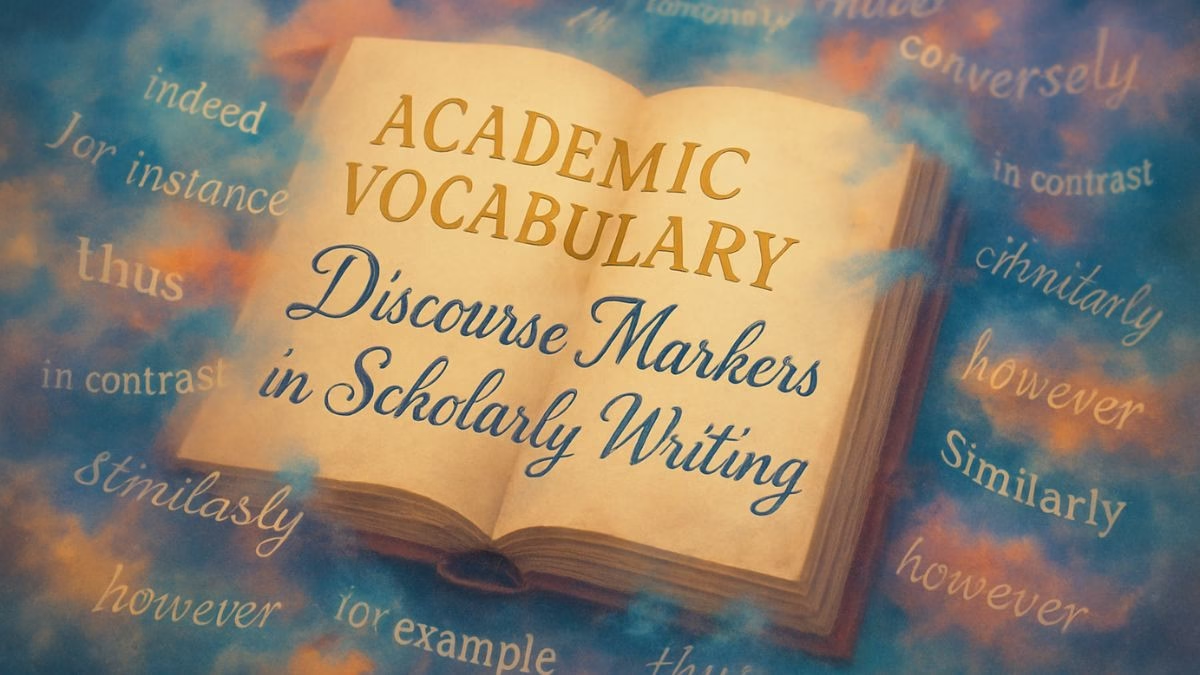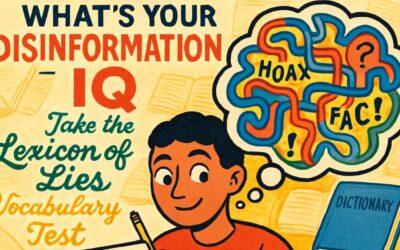Introduction
Welcome to a specialized workout for your academic writing muscles. In the world of scholarly research, your ideas are only as strong as the logic that connects them. How do you guide your reader through a complex argument, signal a change in direction, or emphasize a crucial point? The answer lies in mastering Discourse Markers.
Think of these words and phrases—like ‘however,’ ‘consequently,’ and ‘furthermore’—as the essential signposts of your writing. They are the glue that holds your sentences and paragraphs together, creating a coherent and persuasive flow. Using them correctly is the difference between a confusing paper and a compelling one.
This quiz is more than a test; it’s an interactive learning experience. Each question places you in a common academic writing scenario. You’ll not only choose the right word but learn why it’s right—and why the others are wrong—through detailed hints and feedback.
By the end of this quiz, you will:
- Understand the precise function of 20 essential academic discourse markers.
- Learn how to use them to signal addition, contrast, cause, and effect.
- Improve the clarity, coherence, and professionalism of your writing.
- Gain confidence in constructing sophisticated, logical arguments.
Prepare to transform your writing from a simple collection of facts into a powerful, guided intellectual journey. Let’s begin.
Learning Quiz
This is a learning quiz from English Plus Podcast, in which, you will be able to learn from your mistakes as much as you will learn from the answers you get right because we have added feedback for every single option in the quiz, and to help you choose the right answer if you’re not sure, there are also hints for every single option for every question. So, there’s learning all around this quiz, you can hardly call it quiz anymore! It’s a learning quiz from English Plus Podcast.
Quiz Takeaways: Becoming an Architect of Argument
Hello and welcome. If you’ve just taken the quiz, you’ve engaged with some of the most crucial tools in a scholarly writer’s toolkit. We’re talking about discourse markers. If you haven’t taken it, I invite you to, but for now, let’s unpack this essential topic. What are discourse markers, and why are they so important?
Think of yourself as an architect building an argument. Your ideas are the rooms, and your evidence forms the foundations. But how do you guide your reader from one room to another? How do you show them the hallways, the staircases, the doors that connect your ideas into a single, coherent structure? You do it with discourse markers. They are the words and phrases that signal the relationship between ideas, guiding your reader effortlessly through your logic.
Let’s review the markers from the quiz by grouping them according to their function—their architectural role in your writing.
First, let’s look at the ‘Connectors’—markers of Addition and Elaboration.
These are your hallways, connecting rooms that are side-by-side. The most common are Furthermore, Moreover, and In addition. They all signal that you’re adding another piece of information that supports the same line of argument. For example: “The study was groundbreaking. Furthermore, it was completed under budget.” The second point adds to the positivity of the first. They are largely interchangeable, though Furthermore and Moreover are often considered slightly more formal than In addition.
Sometimes you want to add not just another point, but a specific example. This is where markers like Specifically, For instance, or To illustrate come in. They signal to the reader: “I’ve just made a general statement, now I’m going to give you a concrete example.” As we saw in the quiz, “The system is designed to be highly secure. Specifically, a two-factor authentication process is required.”
Next, we have the crucial ‘Turn Signals’—markers of Contrast and Concession.
These are perhaps the most important markers for creating a sophisticated, balanced argument. They show that you can see more than one side of an issue.
The most basic contrast marker is However. It’s like a sharp turn: “The results were promising; however, the sample size was small.” Other markers like Conversely and In contrast are used for more direct, head-to-head comparisons. Whereas is a champion of this, perfect for comparing two things in a single sentence: “Interview data provided qualitative insights, whereas survey data offered quantitative trends.”
Then there’s a more nuanced type of contrast: concession. This is where you acknowledge a point before introducing an opposing one. Nevertheless and the more formal Notwithstanding are key here. “The model is robust. Nevertheless, it has limitations.” You’re saying, “Yes, that first part is true, but this second part is also true, and it complicates things.” Sophisticated phrases like Be that as it may or That said accomplish the same thing. And let’s not forget the elegant Albeit. It’s a subordinate conjunction, meaning it introduces a lesser, contrasting idea within the same clause: “The evidence was extensive, albeit fragmentary.” It’s a very concise way to make a concession.
Third, we have the ‘Navigators’—markers of Cause, Effect, and Conclusion.
These are the staircases, leading the reader logically from one level of your argument to the next. They answer the question, “So what?”
Therefore, Thus, Consequently, and Hence all signal a result, but with subtle differences. Therefore often implies a purely logical deduction. Consequently suggests a direct result or effect of a preceding action or event: “There were gaps in the research. Consequently, we proposed a new framework.” Thus is often used to introduce a summary or a logical conclusion. And Hence is a more formal version of ‘therefore’ or ‘thus’. Phrases like For this reason or As a result are also clear and effective ways to signal consequence.
Fourth, let’s look at the ‘Organizers’—markers for Sequencing and Summarizing.
These markers manage the overall structure of your paper. They are the “You are here” maps for your reader. Initially signals the beginning of a process. Subsequently signals the next step in a sequence: “The first phase was completed. Subsequently, the team moved to the second phase.” And when you’re ready to wrap up a point or the entire paper, you use markers like In summary, To conclude, or Ultimately, which tells the reader the final outcome of a long process.
Finally, we have the ‘Spotlights’—markers for Emphasis and Clarification.
These markers draw the reader’s attention to what is most important. Indeed is used to confirm or emphasize a statement. Above all signals the most critical point among many. And when you need to rephrase something to make it clearer, you can use In other words or To put it another way. A phrase like To this end is particularly useful, as it means “for this purpose.” It connects an objective with the actions taken to achieve it: “He argued the novel was a masterpiece. To this end, he pointed to its intricate plot.”
Mastering these discourse markers is not about memorizing a list of words. It’s about understanding the logical relationships between your ideas. When you write, ask yourself: Is this sentence adding a point? Contrasting a point? Is it a result of what I just said? Your answer will tell you which signpost to use. When you use them correctly, you do more than just present information; you become an architect, building a powerful, clear, and persuasive argument that guides your reader to exactly the conclusion you want them to reach.










0 Comments